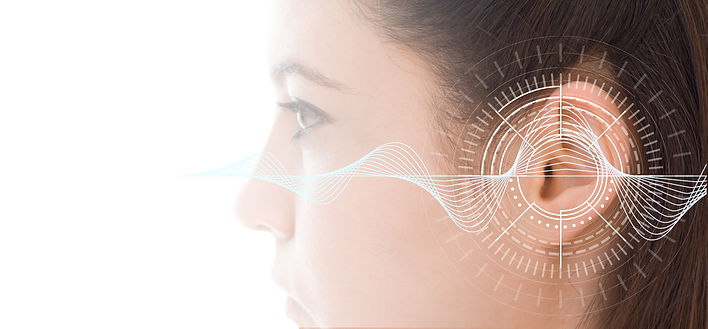top of page

Prevent Damage
How do you know if you are damaging your hearing? Often it is everyday noise that will catch up with us. Especially if the work or activities you are doing everyday expose you to sounds higher than 85 decibels. How do you know if what you are exposed to is higher than these levels? Here is a guide to everyday sounds and exposure levels that can be harmful to your hearing over time:
Everyday Sound and Noises | Intensity (dB) | Response |
|---|---|---|
Firecrackers | 140-150 | Pain and ear injury |
Standing beside or near sirens | 120 | Pain and ear injury |
Shouting or barking in the ear | 110 | Damage and hearing loss is possible in less than 2 minutes |
The maximum volume level for personal listening devices; a very loud radio, stereo, or television; and loud entertainment venues (such as nightclubs, bars, and rock concerts) | 105-110 | Damage to hearing is possible in less than 5 minutes of exposure |
Approaching subway train, car horn at 16 feet (5 meters), and sporting events (such as hockey playoffs and football games) | 100 | Damage to hearing is possible after 15 minutes of exposure |
Motorcycle | 95 | Damage to hearing is possible after 50 minutes of exposure |
Gas-powered lawnmowers and leaf blowers | 80-85 | Damage to hearing is possible after 2 hours of exposure |
City traffic (inside the car) | 80-85 | You may feel very annoyed by the noise |
Washing machine, dishwasher | 70 | You may feel annoyed by the noise |
Normal conversation, air conditioner | 60 | Typically do not cause hearing damage |
Refrigerator hum | 40 | Typically do not cause hearing damage |
Soft whisper | 30 | Typically do not cause hearing damage |
Ticking watch | 20 | Typically do not cause hearing damage |
Normal breathing | 10 | Typically do not cause hearing damage |
Softest sound that can be heard | 0 |

Prevent Hearing Loss
bottom of page